Abstract
1. Ascending and descending colonic segments of normal and Na-depleted rats were perfused in vivo with isotonic solutions of varying Na concentration and the unidirectional Na fluxes and secretion rate of K and bicarbonate and the transmucosal electrical p.d. were measured.
2. Potential difference was greater in Na-depleted rats, especially towards the distal end of the descending colon. With reduction of luminal Na concentration, p.d. was reduced.
3. The ascending and descending segments were similar in regard to Na transport except that the latter had lower passive permeability. Na depletion caused an increase of Na influx rate, Na net flux rate and Na exchange diffusion whilst the mucosal passive Na permeability decreased. These changes resulted in a reduction in the critical luminal Na concentration, i.e. the concentration at which the unidirectional fluxes were equal.
4. K secretion rate was similar in the ascending and descending colon and was increased by Na depletion. In all rats, it was reduced when the luminal Na concentration was low.
5. Bicarbonate secretion rate was unaffected by the Na depletion and all solutions remained isotonic during perfusion.
6. The results confirmed that active Na transport was stimulated by Na depletion but indicated that this was probably not the only factor in the elevation of transmucosal p.d.
Full text
PDF
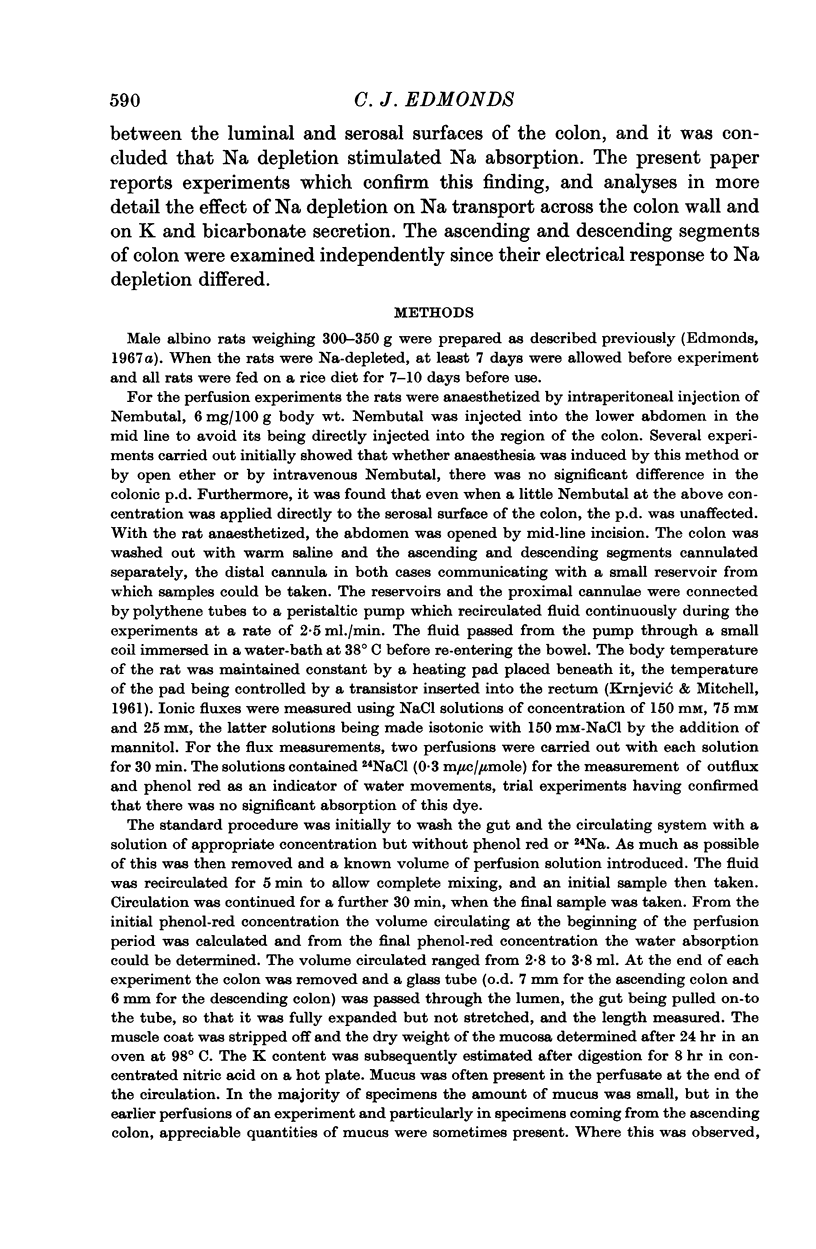
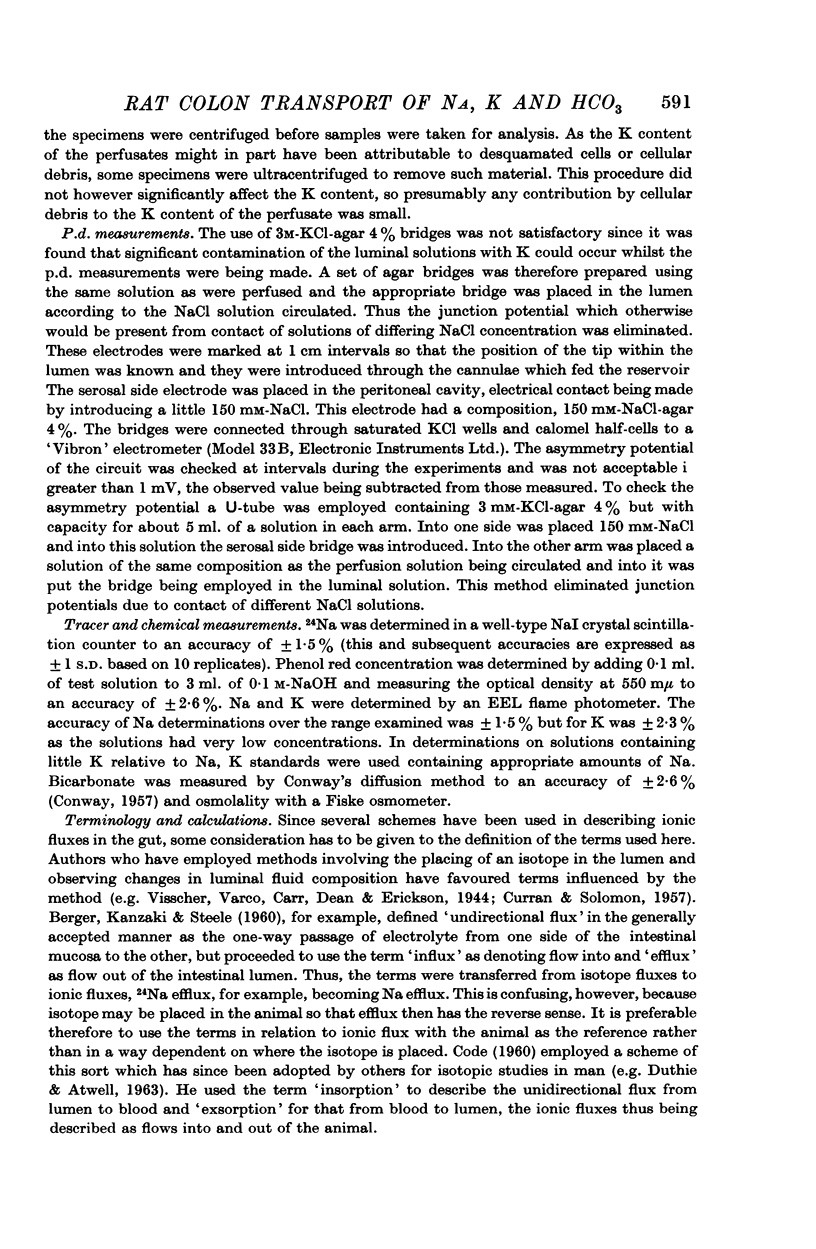
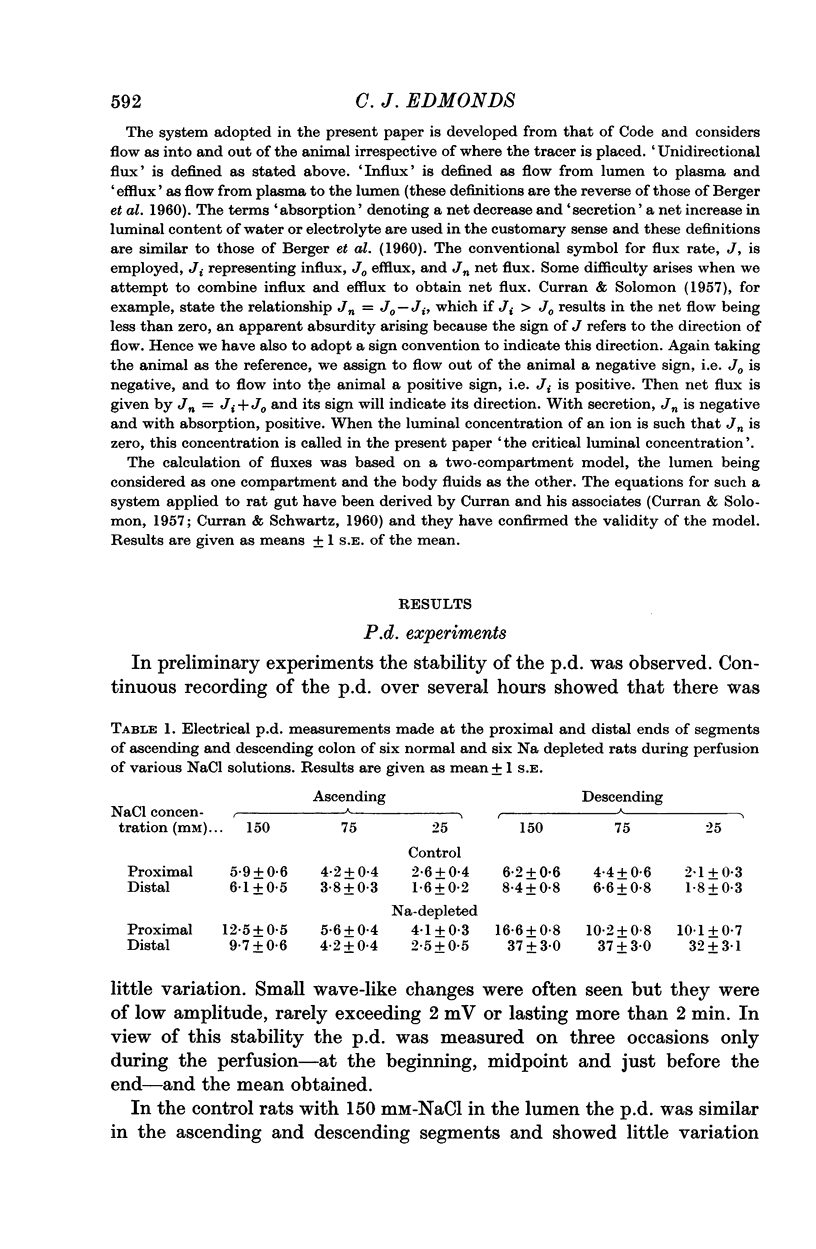
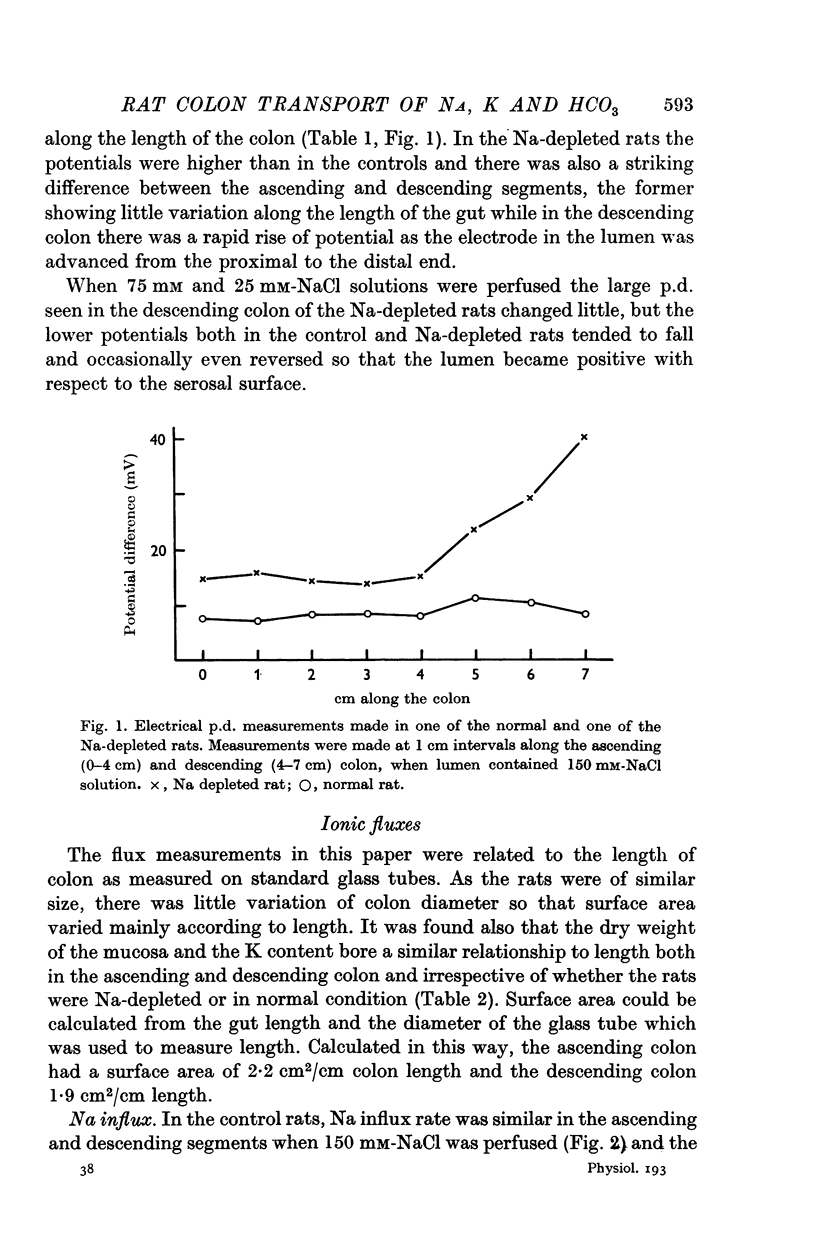
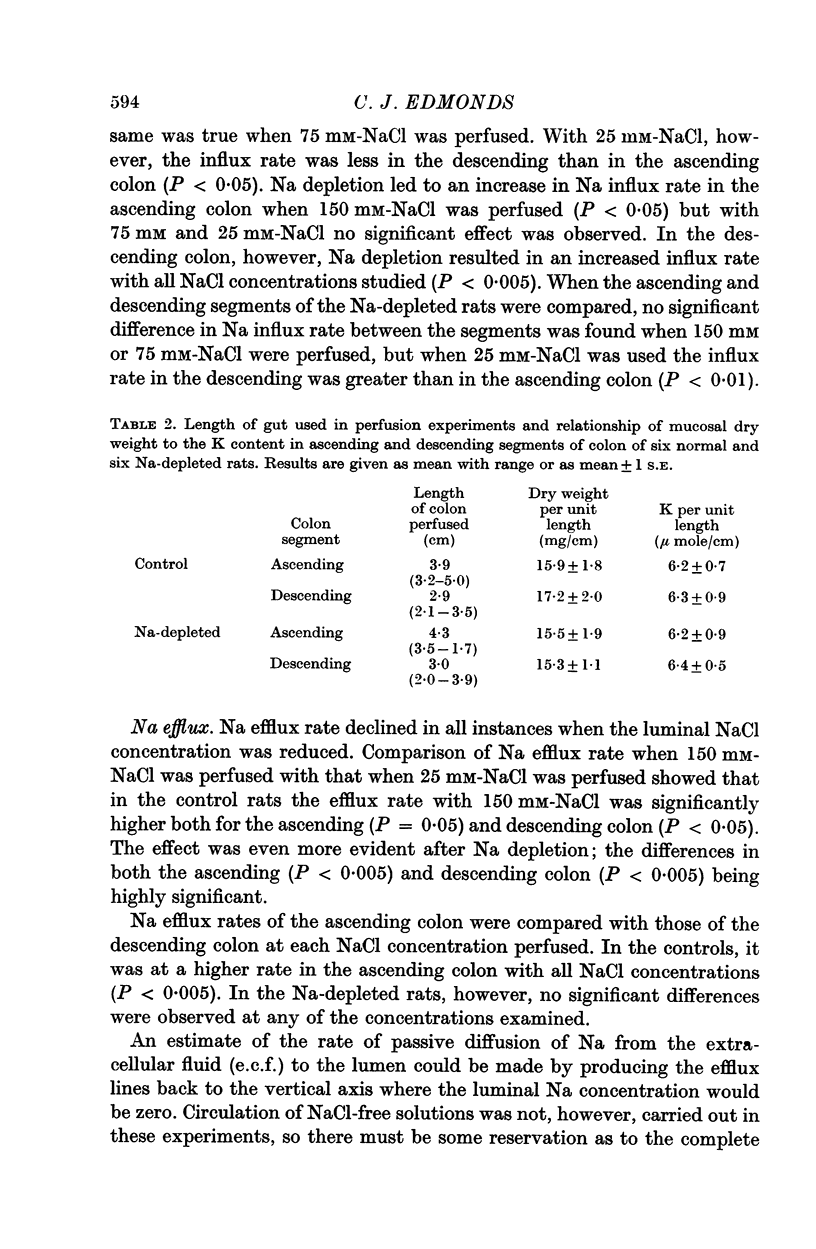
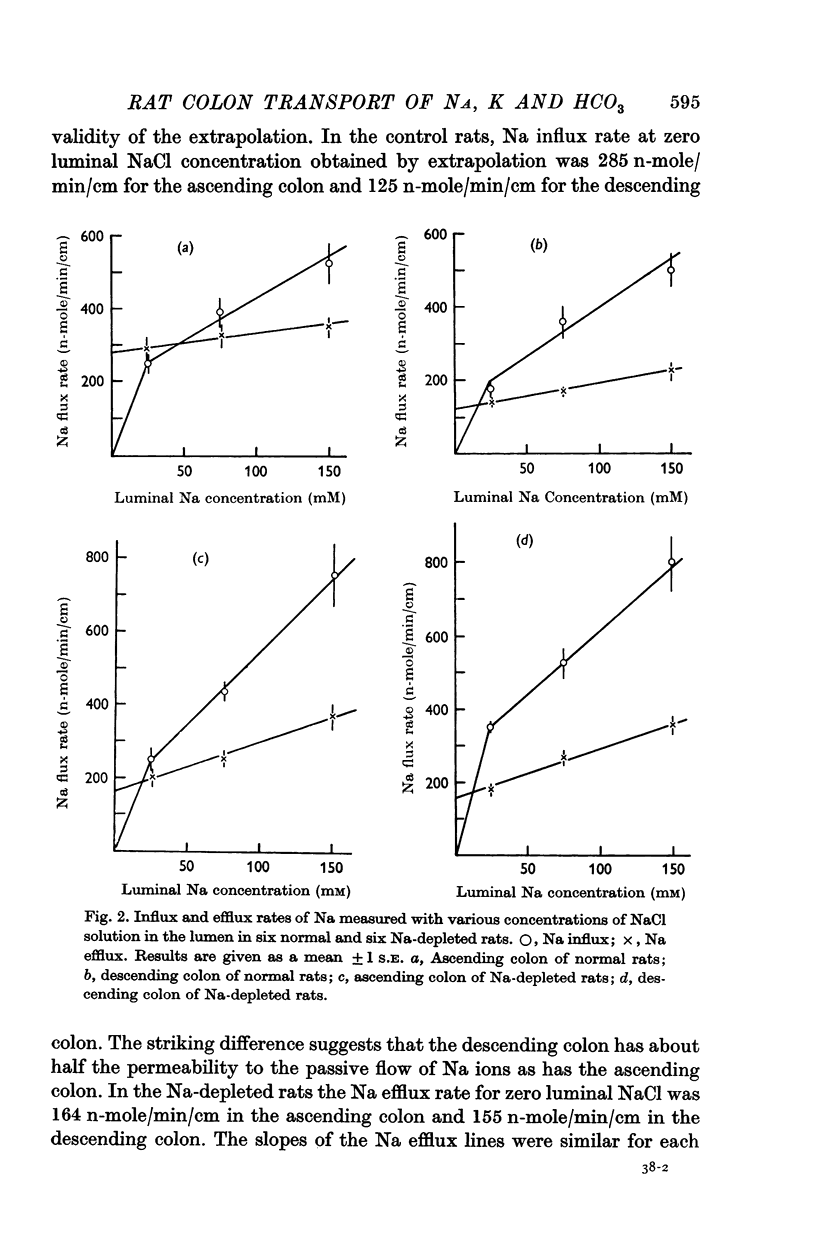
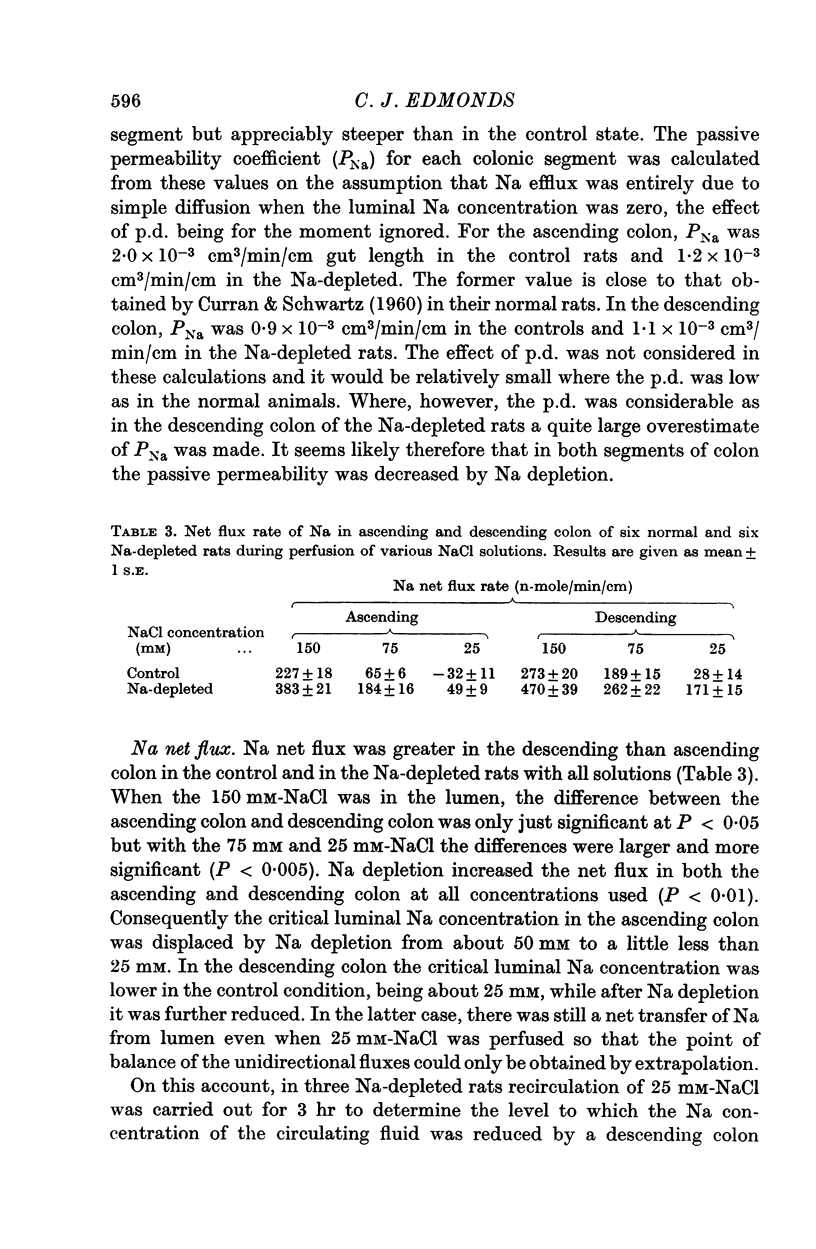
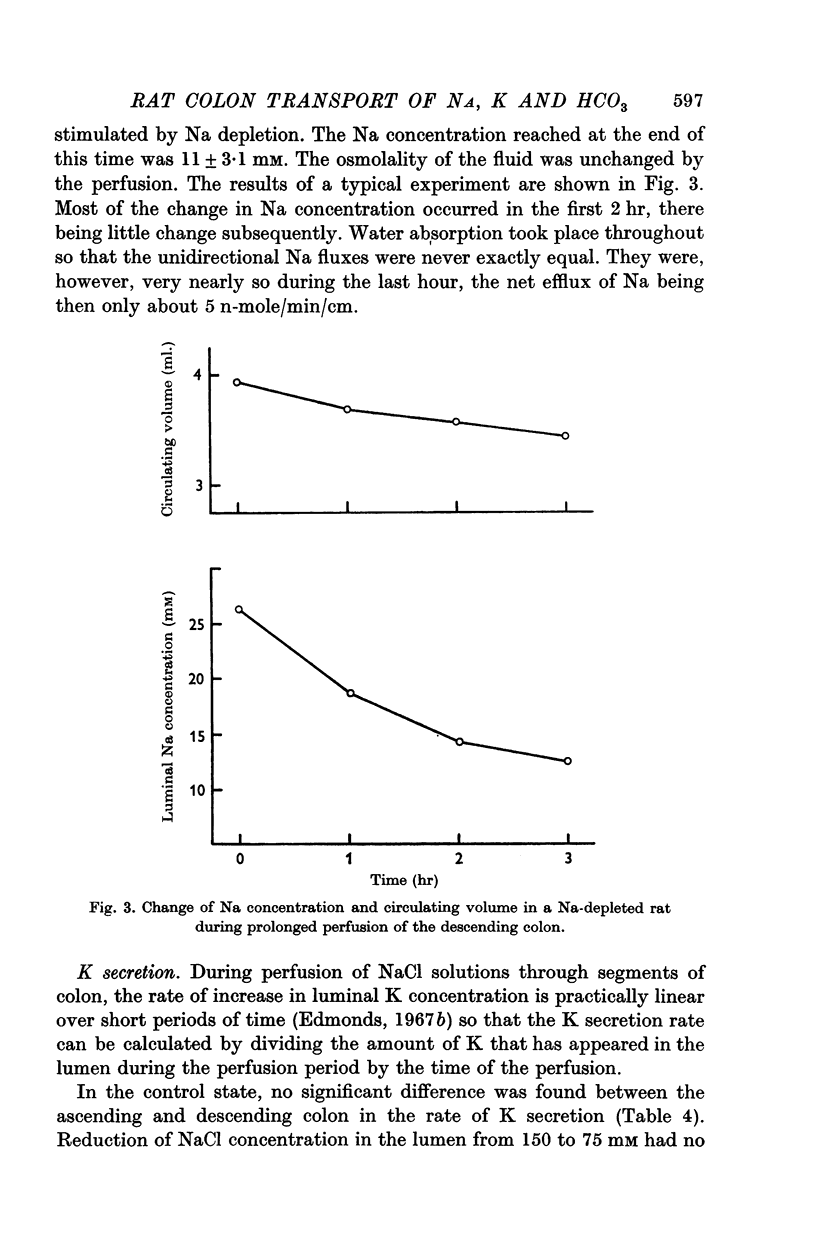
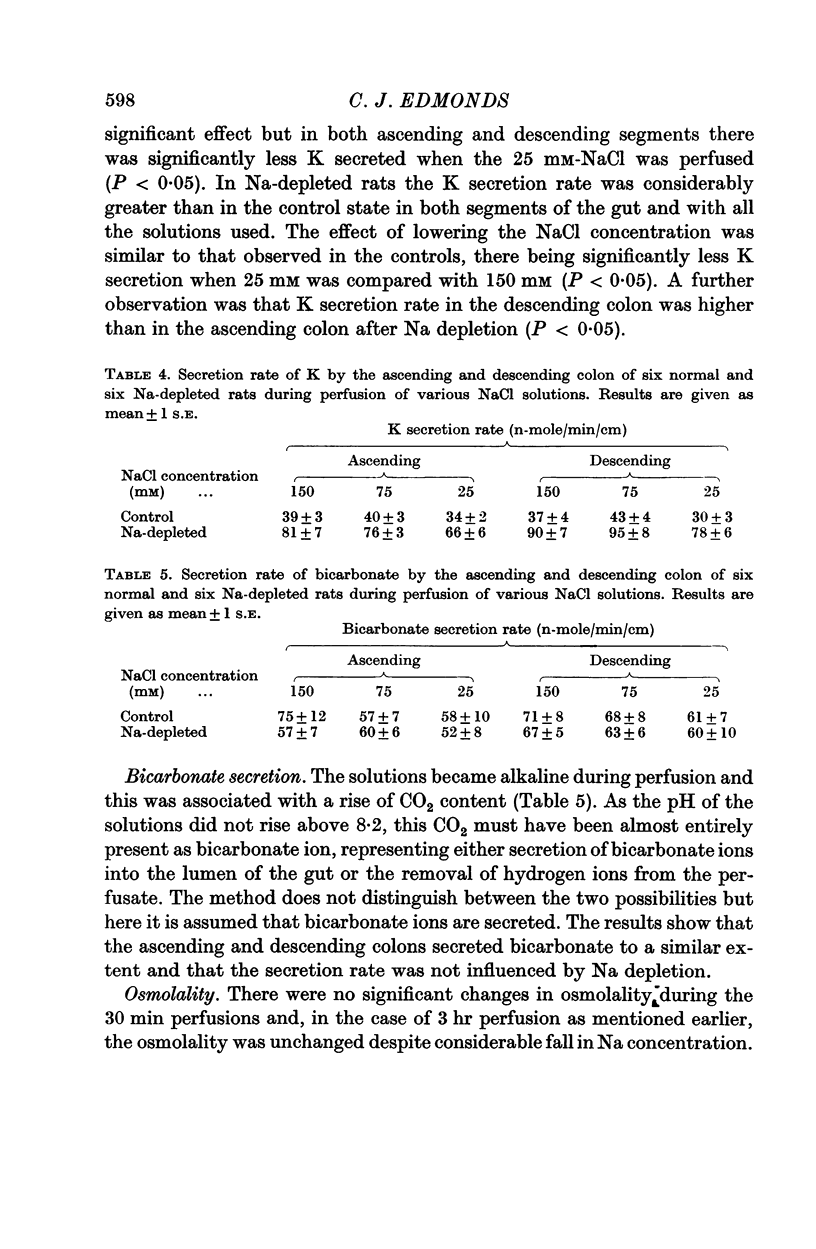
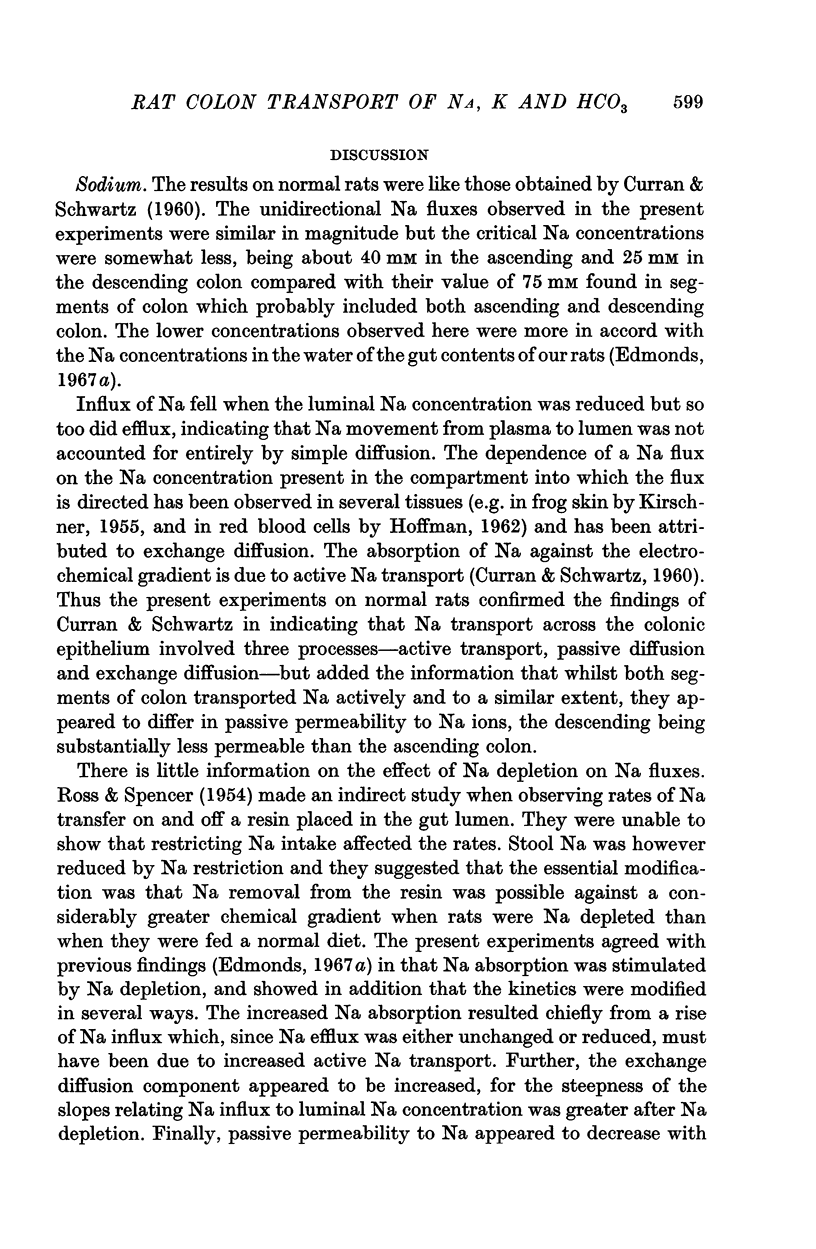
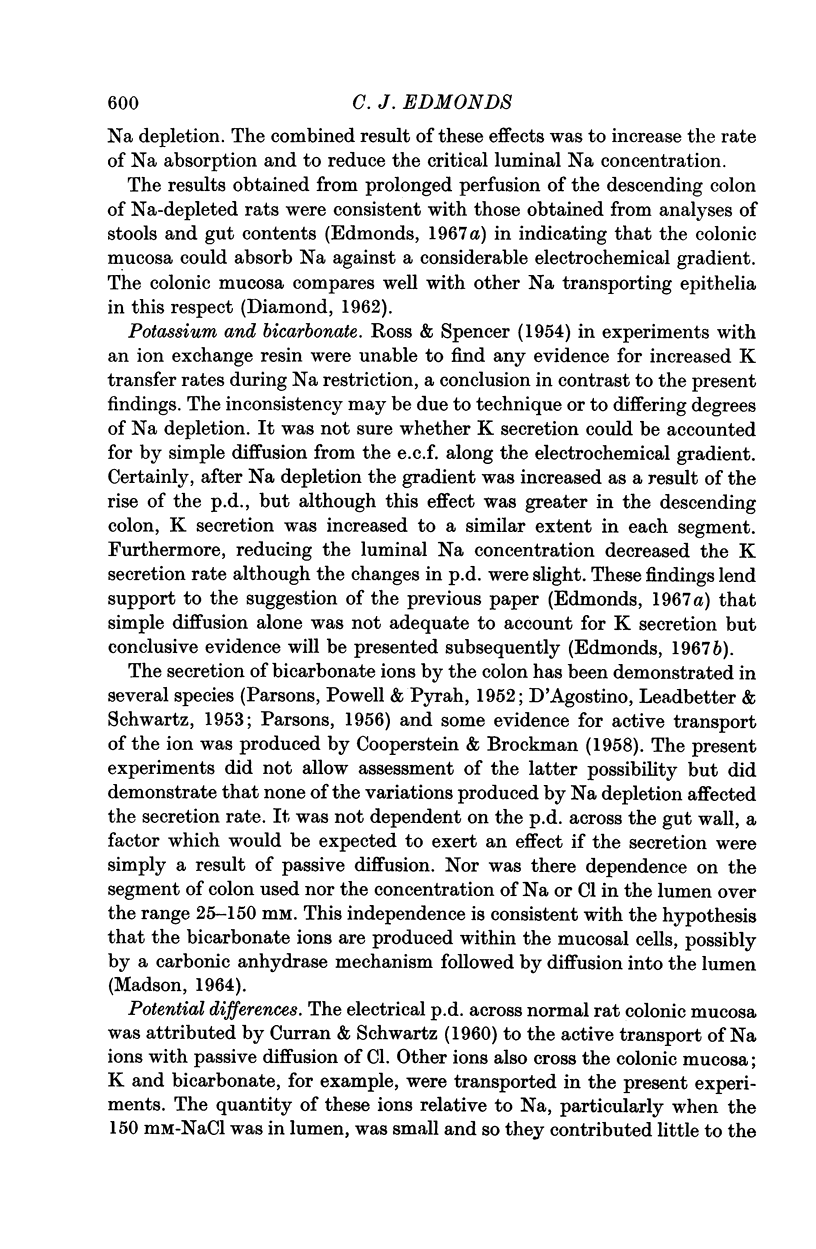
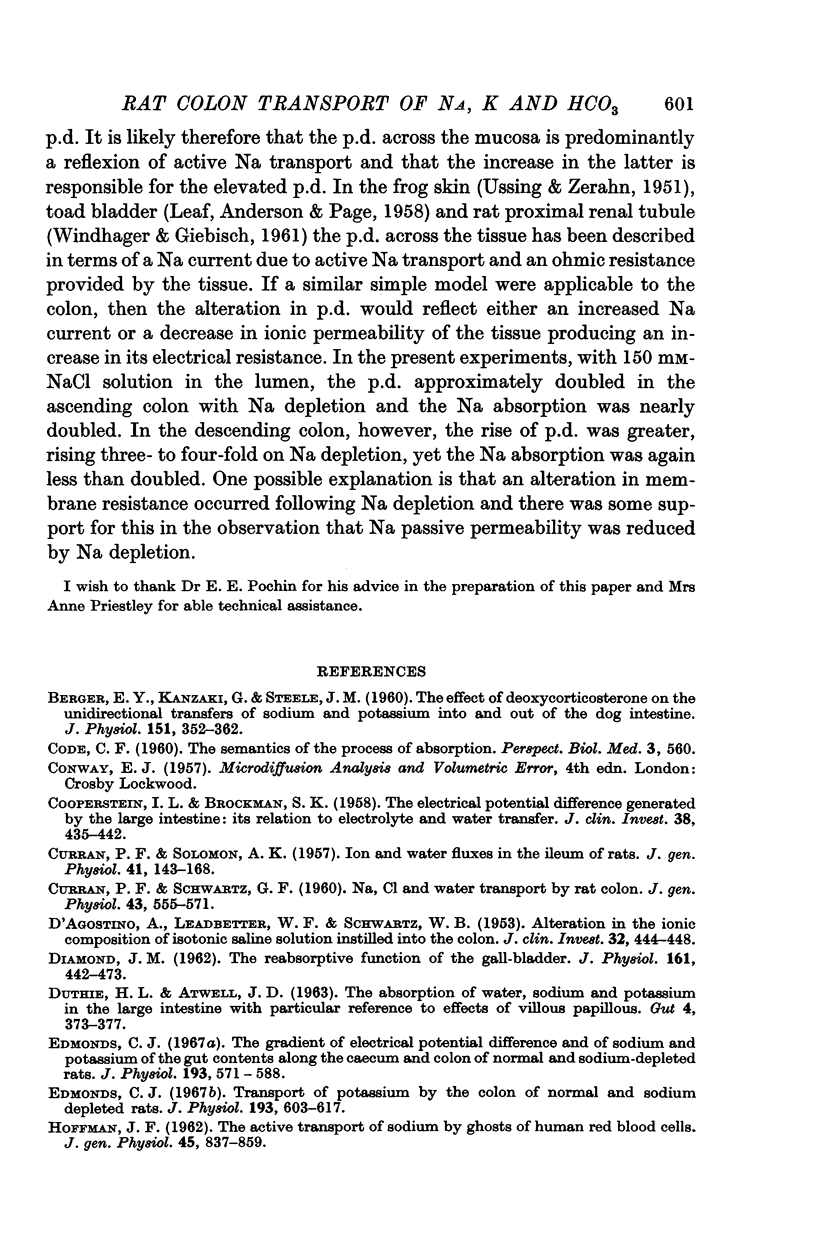
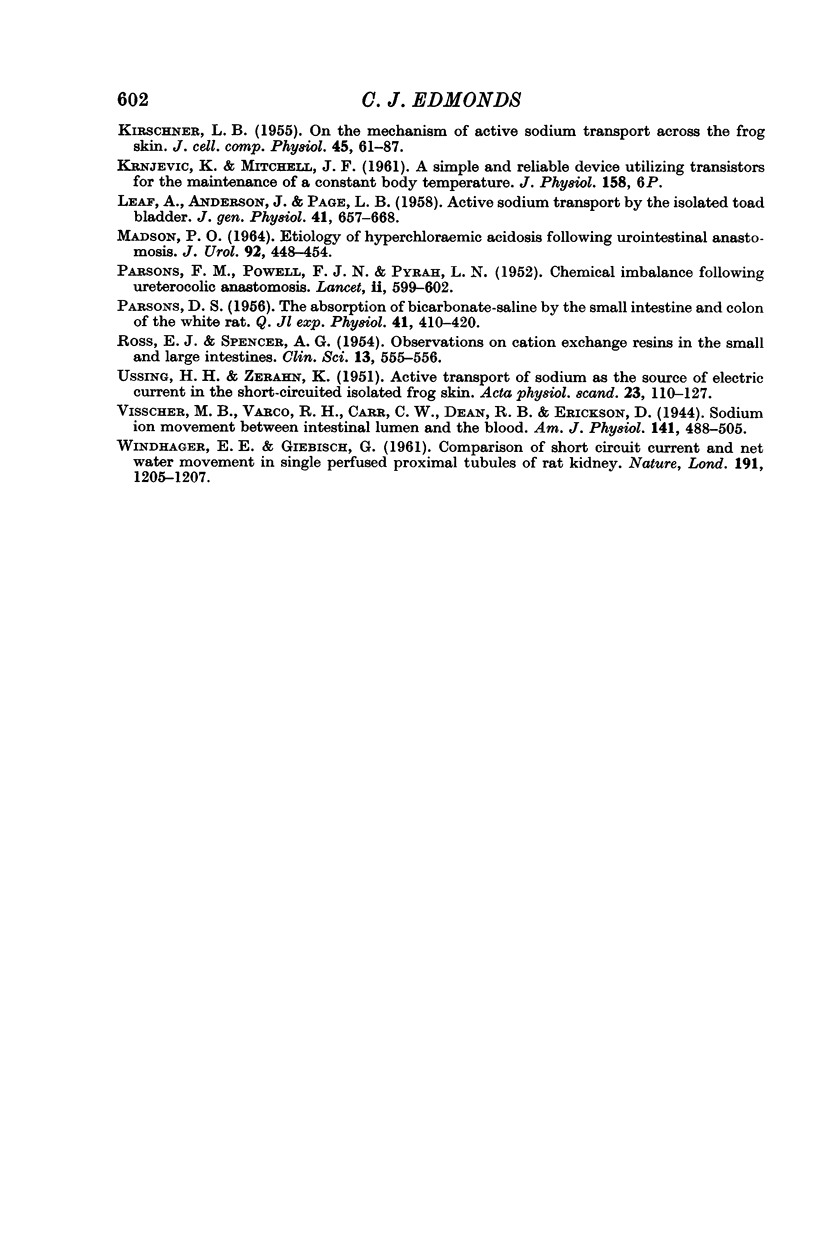
Selected References
These references are in PubMed. This may not be the complete list of references from this article.
- BERGER E. Y., KANZAKI G., STEELE J. M. The effect of deoxycorticosterone on the unidirectional transfers of sodium and potassium into and out of the dog intestine. J Physiol. 1960 May;151:352–362. doi: 10.1113/jphysiol.1960.sp006443. [DOI] [PMC free article] [PubMed] [Google Scholar]
- CODE C. F. The semantics of the process of absorption. Perspect Biol Med. 1960;3:560–562. doi: 10.1353/pbm.1960.0022. [DOI] [PubMed] [Google Scholar]
- COOPERSTEIN I. L., BROCKMAN S. K. The electrical potential difference generated by the large intestine: its relation to electrolyte and water transfer. J Clin Invest. 1959 Feb;38(2):435–442. doi: 10.1172/JCI103818. [DOI] [PMC free article] [PubMed] [Google Scholar]
- CURRAN P. F., SCHWARTZ G. F. Na, Cl, and water transport by rat colon. J Gen Physiol. 1960 Jan;43:555–571. doi: 10.1085/jgp.43.3.555. [DOI] [PMC free article] [PubMed] [Google Scholar]
- CURRAN P. F., SOLOMON A. K. Ion and water fluxes in the ileum of rats. J Gen Physiol. 1957 Sep 20;41(1):143–168. doi: 10.1085/jgp.41.1.143. [DOI] [PMC free article] [PubMed] [Google Scholar]
- D'AGOSTINO A., LEADBETTER W. F., SCHWARTZ W. B. Alterations in the ionic composition of isotonic saline solution instilled into the colon. J Clin Invest. 1953 May;32(5):444–448. doi: 10.1172/JCI102757. [DOI] [PMC free article] [PubMed] [Google Scholar]
- DIAMOND J. M. The reabsorptive function of the gall-bladder. J Physiol. 1962 May;161:442–473. doi: 10.1113/jphysiol.1962.sp006898. [DOI] [PMC free article] [PubMed] [Google Scholar]
- DUTHIE H. L., ATWELL J. D. THE ABSORPTION OF WATER, SODIUM, AND POTASSIUM IN THE LARGE INTESTINE WITH PARTICULAR REFERENCE TO THE EFFECTS OF VILLOUS PAPILLOMAS. Gut. 1963 Dec;4:373–377. doi: 10.1136/gut.4.4.373. [DOI] [PMC free article] [PubMed] [Google Scholar]
- Edmonds C. J. The gradient of electrical potential difference and of sodium and potassium of the gut contents along the caecum and colon of normal and sodium-depleted rats. J Physiol. 1967 Dec;193(3):571–588. doi: 10.1113/jphysiol.1967.sp008379. [DOI] [PMC free article] [PubMed] [Google Scholar]
- Edmonds C. J. Transport of potassium by the colon of normal and sodium-depleted rats. J Physiol. 1967 Dec;193(3):603–617. doi: 10.1113/jphysiol.1967.sp008381. [DOI] [PMC free article] [PubMed] [Google Scholar]
- HOFFMAN J. F. The active transport of sodium by ghosts of human red blood cells. J Gen Physiol. 1962 May;45:837–859. doi: 10.1085/jgp.45.5.837. [DOI] [PMC free article] [PubMed] [Google Scholar]
- KIRSCHNER L. B. On the mechanism of active sodium transport across the frog skin. J Cell Physiol. 1955 Feb;45(1):61–87. doi: 10.1002/jcp.1030450106. [DOI] [PubMed] [Google Scholar]
- LEAF A., ANDERSON J., PAGE L. B. Active sodium transport by the isolated toad bladder. J Gen Physiol. 1958 Mar 20;41(4):657–668. doi: 10.1085/jgp.41.4.657. [DOI] [PMC free article] [PubMed] [Google Scholar]
- MADSEN P. O. THE ETIOLOGY OF HYPERCHLOREMIC ACIDOSIS FOLLOWING UROINTESTINAL ANASTOMOSIS: AN EXPERIMENTAL STUDY. J Urol. 1964 Nov;92:448–454. doi: 10.1016/S0022-5347(17)63986-7. [DOI] [PubMed] [Google Scholar]
- PARSONS F. M., POWELL F. J. N., PYRAH L. N. Chemical imbalance following ureterocolic anastomosis. Lancet. 1952 Sep 27;2(6735):599–602. doi: 10.1016/s0140-6736(52)91595-x. [DOI] [PubMed] [Google Scholar]
- ROSS E. J., SPENCER A. G. Observations on cation exchange resins in the small and large intestines. Clin Sci. 1954 Nov;13(4):555–566. [PubMed] [Google Scholar]
- USSING H. H., ZERAHN K. Active transport of sodium as the source of electric current in the short-circuited isolated frog skin. Acta Physiol Scand. 1951 Aug 25;23(2-3):110–127. doi: 10.1111/j.1748-1716.1951.tb00800.x. [DOI] [PubMed] [Google Scholar]
- WINDHAGER E. E., GIEBISCH G. Comparison of short-circuit current and net water movement in single perfused proximal tubules of rat kidneys. Nature. 1961 Sep 16;191:1205–1207. doi: 10.1038/1911205a0. [DOI] [PubMed] [Google Scholar]


